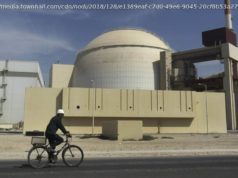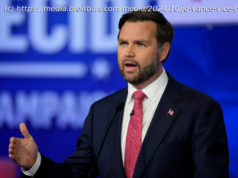Some of its effects of President Trump’s tax changes are already visible, and some of them will take months, or even years, to understand.
Monday is the first Tax Day under the new rules of the Tax Cuts and Jobs Act, but Americans have been adapting to the law since it passed in late 2017.
Some of itseffects are already visible, and some of them will take months, or even years, to understand. After all, economists are still publishing studies about the effect of the last comprehensive tax overhaul back in 1986, signed by Ronald Reagan.
Here’s what we can — and can’t — say about how President Donald Trump’s tax cuts haveimpacted the economy so far.
One of the central features of the Tax Cuts and Jobs Act was a drop in the corporate income tax rate, from 35% to 21%.
Even though plenty of companies never paid that full rate because of various exemptions, the decrease still took a big bite out of corporate tax collections. They plunged from a seasonally-adjusted annual rate of $264 billion in the fourth quarter of 2017 to $149 billion the next, when the new rules went into effect, and they haven’t bounced back.
Corporate income taxes make up only a small slice of the federal government’s overall tax revenue, and have declined as a share of the economy from their post-World War II height in 1951. However, corporate tax revenue still tends to increase when the economy is doing well. This is the first time corporate taxes have taken such a hit when the economy is not in recession.
The nonpartisan Congressional Budget Office forecasts that corporate income tax revenues will gradually rise in the coming years, as will personal income taxes — but not enough for the tax cuts to “pay for themselves,” as their Republican backers claimed they would. According to the CBO, the tax overhaul is set to add $1.85 trillion to the national debt over an 11-year period, even accounting for positive macroeconomic effects.
Congress has yet to take up spending cuts to big-ticket items like Medicare and Social Security that the White House had proposed to curb deficits. Still, mounting debt makes conversations around future expenditures more difficult. Lawmakers have choked on passing a large infrastructure package, for example, because there’s no plan to pay for it.
“In some ways, our economy is held back by the public investments that we are not making,” said Steve Wamhoff, director of federal tax policy for the left-leaning Institute on Taxation and Economic Policy. “Even if we think that spending on infrastructure would be a good thing, politically we can’t do this spending because we have to address this deficit.”
Most economists forecast that the tax cuts, along with a boost to military spending, would goose the economy initially. The CBO estimates that about 0.3 percentage points of the 2.9% growth in gross domestic product in 2018 can be attributed to the tax cuts.
Part of that came from an increase in business investment in research and development, new factories and equipment, possibly encouraged by a provision that allowed businesses to immediately expense capital expenditures, rather than expense them gradually over several years. Business investment grew 8.4% from the fourth quarter of 2017 to the fourth quarter or 2018. That’s a good sign because better factories, equipment and tools are supposed to boost productivity, which in some casesallows workers to make more money.
Wages did start to grow a bit faster at the end of 2018, at least by some measures, especially for workers on the lower end of the income spectrum. But that was also a consequence of a tight labor market created by nearly a decade of continuous job growth, as well as minimum wage hikes in many states.






